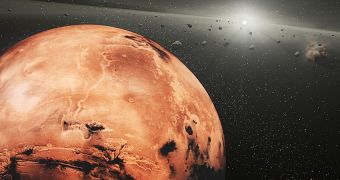A team of investigators from the United States may have finally cracked the mystery of why the surface of asteroids is redder than that of meteorites. This study has been several years in the making, but its conclusions are well worth the wait.
Meteorites are defined as the remnants of larger space rocks that broke apart around Earth at some point. They tend to be darker in appearance than asteroids, and this difference between the two classes of objects have always baffled investigators.
A team led by Massachusetts Institute of Technology professor of planetary sciences Richard Binzel argued three years ago that our planet's gravity was responsible for darkening asteroids, but only when the latter came within the inner solar system.
Most of the space rocks zooming past Earth or Mars today come from the Inner Asteroid Belt, which stretches between the orbits of the Red Planet and Jupiter. While at this location, they are significantly affected by solar radiations, which turn them a reddish hue.
When they finally make their way in the inner solar system, and fly past Earth, our planet's gravity stirs the fine red particles covering the space rocks, and brings fresh, darker grains to the surface. What the team discovered in the new study is that Mars is capable of exerting the same effect.
However, Binzel and his team determined that asteroids need to pass closer to Mars than Earth, if the asteroid quakes are to take place. The study was based on an analysis of refreshed asteroids, which revealed that some of these space rocks never flew around Earth.
“We don’t think Earth is the only major driver anymore, and it opens our minds to the possibility that there are other things happening in the solar system causing these asteroids to be refreshed,” says MIT Department of Earth, Atmospheric and Planetary Sciences postdoctoral student, Francesca DeMeo.
The research group, which also featured former MIT research associate Matthew Lockhart, highlight additional details of the study in a paper published in the latest issue of the scientific journal Icarus.
“Mars is right next to the asteroid belt, and in a way it gets more opportunity than the Earth does to refresh asteroids. So that may be a balancing factor,” Binzel adds. The MIT investigation was conducted with funding from the US National Science Foundation (NSF).

 14 DAY TRIAL //
14 DAY TRIAL //